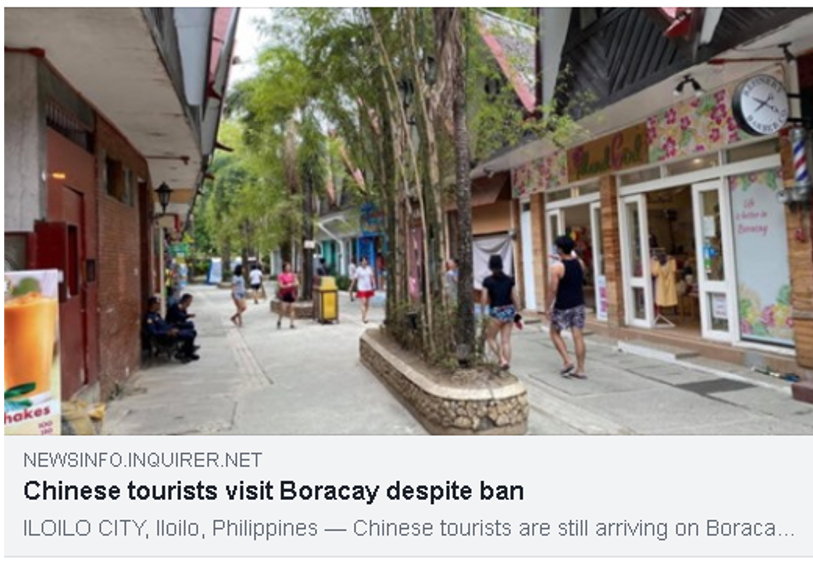The nCoV travel ban: Beyond the regional scope

PRESIDENT RODRIGO Duterte ordered a temporary ban on the entry into the Philippines of tourists from China and its special administrative regions of Macau and Hongkong. But some visitors from that country have nevertheless managed to visit Boracay island despite the ban.
Duterte issued the order last February 2, a day after the first death from the 2019 novel coronavirus (nCoV) contagion outside China occurred in the Philippines, and more than a month since local and international media reported the presence of a “mysterious” respiratory disease in Wuhan City in China’s Hubei province. Since then two other cases have also been found in the Philippines, while over 80 individuals who have visited China are being monitored for symptoms of the disease.
The Philippine Daily Inquirer’s Nestor P. Burgos, Jr., in a February 6 report found that the municipal government of Malay in Aklan province is monitoring for signs of the disease 429 Chinese visitors who were in China 14 days before they entered the Philippines.
Burgos also quoted Peter Tay, the Chinese Embassy’s liaison officer in Boracay, as saying that 78 more tourists had arrived from China last Tuesday, February 4, or two days after the travel ban was imposed last February 2. Tay said he did not know how they managed to get into the resort island, a favourite destination of Chinese tourists. According to a councilor of Malay municipality, the report said, another group of tourists from China also arrived two days ago.
As informative as the Inquirer report was, it could have been more useful if the gatekeepers in Manila also included information about the travel ban and how rigorously it was being implemented. The public should know which airlines were responsible for flying the tourists to either Caticlan or Kalibo in Aklan province; and what government agencies are implicated in the possible lapses in the country’s airport security as set by the preventive protocols set for nCoV. As it is, the report only provided such details as the passing of a resolution by the Malay council asking the mayor of that municipality to implement the travel ban.
The desk should have seen the story as more than just regional news; broadened its scope by including interviews with agencies responsible for enforcing the ban, not just in Boracay, but also in Cebu, Bohol and Palawan where travel destinations draw international tourists. Their responses are crucial to public interest, revealing how effectively the declared government policy is stopping the spread of the novel coronavirus.
Inquirer’s editorial desk should have realized the implications of the Burgos report. It could have enlarged the story and given it more prominent space in the paper; or followed it up with a more comprehensive probe on the overall implementation of the travel ban during this public health crisis. The preventive measure is after all a significant component of the government’s strategy to protect Filipinos from the nCoV contagion.
Leave a Reply